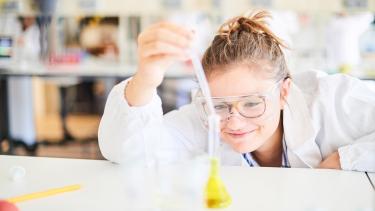The CPB, through the multidisciplinary research it develops, is part of three institutes: NISM for the biomaterials side, NARILIS, for the medicinal chemistry-biotechnology side and ILEE for the environmental aspects.
Research areas
BIOMATERIALS-BIOMEMITICS: In biomaterials design, the team is studying, for example, how certain intrinsic characteristics of membrane pore-forming proteins can be used in the manufacture of biocompatible and biodegradable materials, such as biosensors or nanoreactors.
ENVIRONMENT: In terms of environmental issues, we are studying, for example, in collaboration with the Gembloux Agro BioTech Faculty, enzymes involved in the metabolism of aphids and bugs with a view to designing low-toxicity, environmentally-friendly bioinsecticides.
THERAPEUTIC CHEMISTRY: In drug design, the laboratory contributes its expertise in particular by studying intrinsically disordered proteins, and their protein-protein interactions, involved in mitosis or gene splicing, cellular processes essential for the survival of cancer cells. Inhibiting these proteins or their interactions would therefore be a prime anti-cancer strategy. This work is being carried out in collaboration with the GIGA at Ulg. In collaboration with the Biology Department (URBM) at Unamur, the laboratory is also working on copper resistance mechanisms put in place by certain bacteria to escape the bactericidal effects of this metal.
BIOTECHNOLOGY: The development of effective techniques for renaturating membrane proteins is a major challenge in biotechnology. Indeed, membrane proteins are difficult systems to overproduce and stabilize. Yet they are of vital importance in a wide range of applications: therapeutic targets, biosensors, etc. In this context, the CPB is working on the implementation of a renaturation method based on a detergent and a cosolvent.
The characterization of protein structure and properties is therefore at the heart of all these projects at the crossroads of biology, physics and chemistry.
Composition de l'équipe de recherche
Promoteur (PI)
Catherine MICHAUX, est également affiliée aux Instituts NISM (Pôle FSM) et NARILIS (NaRePi) et ILEE.
- Catherine Michaux dans l'annuaire du personnel
- Catherine Michaux sur le portail recherche


